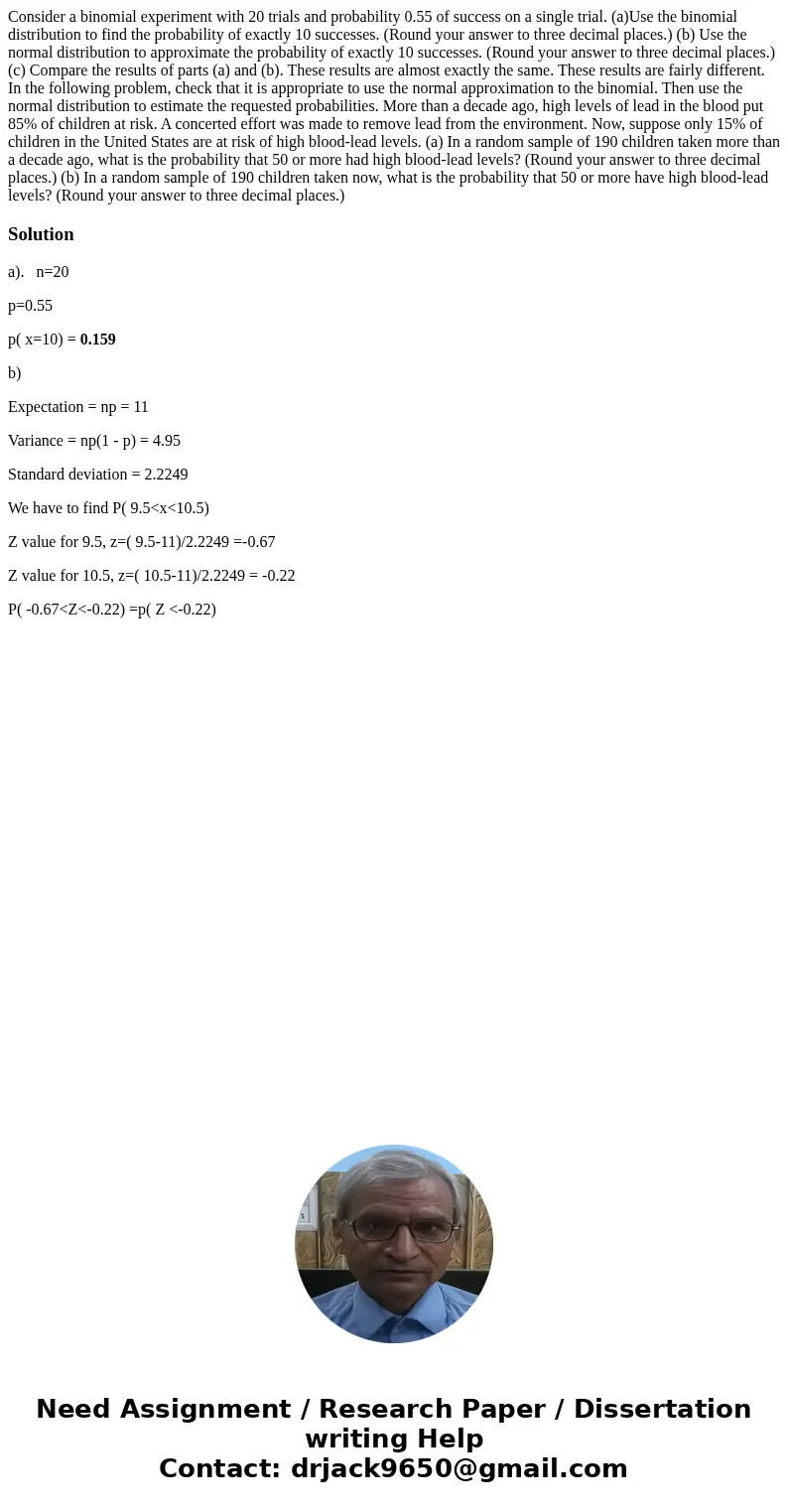Consider a binomial experiment with 20 trials and probabilit
Consider a binomial experiment with 20 trials and probability 0.55 of success on a single trial. (a)Use the binomial distribution to find the probability of exactly 10 successes. (Round your answer to three decimal places.) (b) Use the normal distribution to approximate the probability of exactly 10 successes. (Round your answer to three decimal places.) (c) Compare the results of parts (a) and (b). These results are almost exactly the same. These results are fairly different. In the following problem, check that it is appropriate to use the normal approximation to the binomial. Then use the normal distribution to estimate the requested probabilities. More than a decade ago, high levels of lead in the blood put 85% of children at risk. A concerted effort was made to remove lead from the environment. Now, suppose only 15% of children in the United States are at risk of high blood-lead levels. (a) In a random sample of 190 children taken more than a decade ago, what is the probability that 50 or more had high blood-lead levels? (Round your answer to three decimal places.) (b) In a random sample of 190 children taken now, what is the probability that 50 or more have high blood-lead levels? (Round your answer to three decimal places.) 
Solution
a). n=20
p=0.55
p( x=10) = 0.159
b)
Expectation = np = 11
Variance = np(1 - p) = 4.95
Standard deviation = 2.2249
We have to find P( 9.5<x<10.5)
Z value for 9.5, z=( 9.5-11)/2.2249 =-0.67
Z value for 10.5, z=( 10.5-11)/2.2249 = -0.22
P( -0.67<Z<-0.22) =p( Z <-0.22)

 Homework Sourse
Homework Sourse